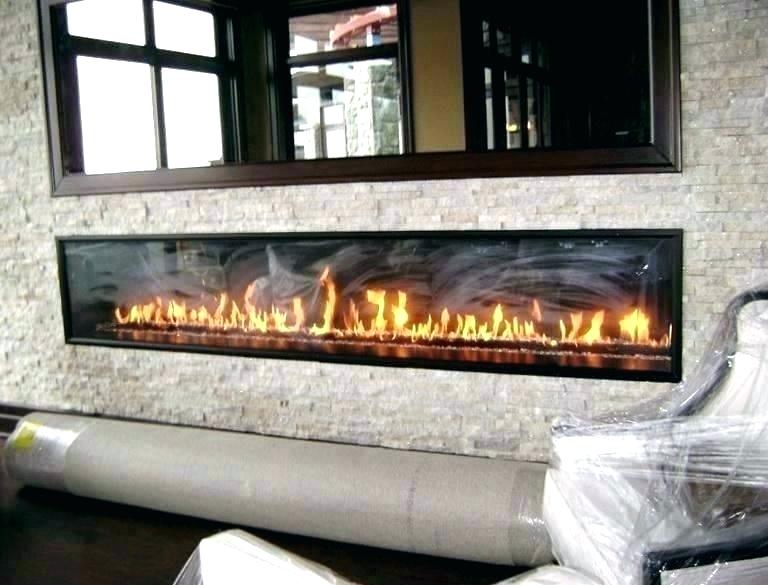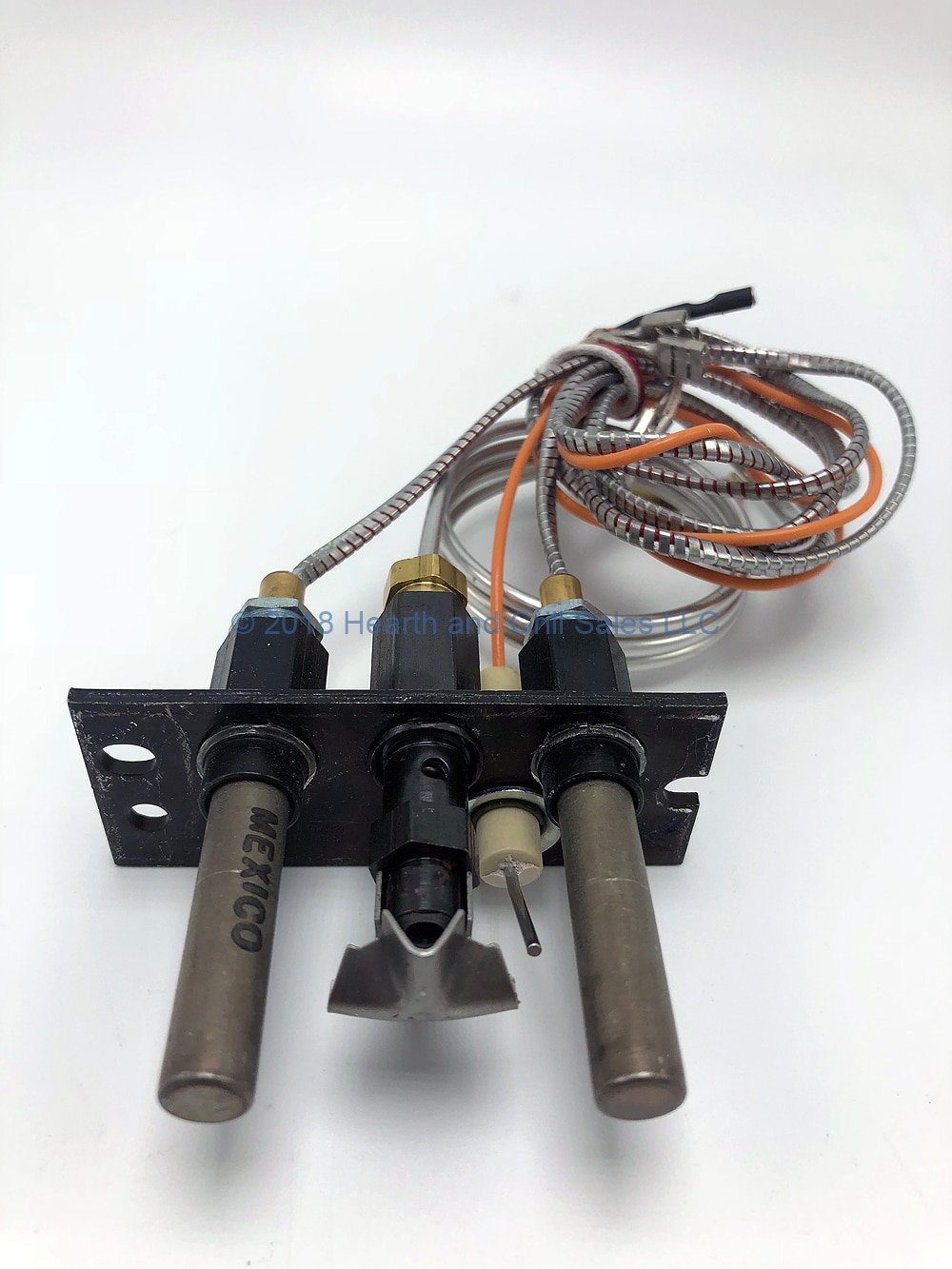Gas Fireplace Replacement
Replacing a gas fireplace can seem like a daunting task, but it’s often necessary to enhance safety, and efficiency, or update the aesthetics of your home. Over time, older gas fireplaces can become inefficient, leading to higher energy costs and reduced performance. Technology has advanced considerably in recent years, and modern gas fireplaces are designed to be more energy-efficient, offering improved heat output while consuming less fuel. When you replace an old gas fireplace, you can also take advantage of new features such as remote controls, programmable thermostats, and better flame technology that offers a more realistic fire. Beyond the functional improvements, a replacement can also revitalize the look of your living space, giving it a fresh, updated feel that complements your current decor.

The process of replacing a gas fireplace starts with evaluating the existing setup. You’ll need to determine whether your current gas line, venting system, and chimney (if applicable) are in good condition and capable of supporting a new unit. In many cases, the existing gas line can be reused, but it’s important to have it inspected by a professional to ensure it’s safe and up to code. The type of venting system your fireplace uses—direct vent, ventless, or natural vent—will also affect your replacement options. Direct vent fireplaces, which use outside air for combustion, are generally considered the most efficient and are the preferred choice for many homeowners. However, ventless fireplaces offer more flexibility in placement, as they don’t require a chimney or flue. Understanding your current system will help you choose a replacement that works seamlessly with your home’s existing infrastructure.

Choosing the right replacement gas fireplace requires balancing aesthetics, functionality, and budget. Gas fireplaces come in a variety of styles, from sleek, modern designs with clean lines to more traditional models that mimic the look of a wood-burning fireplace. Consider the size of the unit in relation to the room it will heat—too large, and it may overpower the space; too small, and it may not provide enough warmth. Many modern gas fireplaces also offer customizable options, such as different types of surrounds, interior firebox finishes, and decorative media like ceramic logs, glass, or stones. Additionally, you’ll want to look at the fireplace’s efficiency rating, often measured in terms of British Thermal Units (BTUs), to ensure it meets your heating needs without consuming excessive fuel.

Safety and professional installation are critical when replacing a gas fireplace. While it might be tempting to handle the replacement yourself, gas appliances require specialized knowledge to ensure they are installed correctly and operate safely. A licensed professional will ensure that the gas lines, venting, and electrical components are all properly connected and compliant with local building codes. They will also test the system to ensure there are no gas leaks, which could pose a serious risk to your home and family. In addition to the installation, it’s essential to maintain your new gas fireplace with regular inspections and cleaning. This not only ensures optimal performance but also helps prevent issues like carbon monoxide buildup, improper ventilation, or malfunctioning components. By replacing your gas fireplace with the right unit and professional help, you can enjoy a safe, efficient, and beautiful heating source for many years.

Parts Of A Gas Fireplace (Explained With Real Examples)

Which Is The Best Lennox Gas Fireplace Replacement Logs – Home Gadgets

11 Beautiful Gas Fireplace Replacement Logs Fireplace Ideas

Gas Fireplace Control Valve Replacement Cost – Fireplace World

The 7 Best Gas Fireplace Inserts of 2024
/ScreenShot2018-06-28at11.08.16AM-5b34fa02c9e77c00372da939.png)
Majestic RHE32 Gas Fireplace Insert Replacement Parts

Gas fireplace replacement logs

How to Replace Gas Fireplace Inserts

Regency Fire Genie Remote Control & Receiver

Heat N Glo Thermocouple, Replacement RS , Gas Stove Fireplace

Related Posts:
- Gas Fireplace No Pilot Light
- Natural Gas Fireplace Venting Options
- Gas Fireplace Components
- Gas Fireplace Crackle Box
- Pilot Light Assembly for Gas Fireplace
- Gas Fireplace Leak
- Turn on a Gas Fireplace
- Gas Fireplace Glass Fogs Up
- Gas Fireplace Venting Kits
- Christmas Decor Around Gas Fireplace
Gas fireplaces are a popular choice for homeowners looking to add warmth and ambiance to their living spaces. However, like all appliances, gas fireplaces have a limited lifespan and will eventually need to be replaced. Whether your current gas fireplace is outdated, inefficient, or simply not working properly, replacing it with a newer model can be a great investment in your home. In this guide, we will discuss the benefits of gas fireplace replacement, as well as important factors to consider when choosing a new unit.
Benefits of Gas Fireplace Replacement
Improved Efficiency: Older gas fireplaces can be inefficient, leading to higher energy bills and wasted heat. By replacing your old fireplace with a newer, more energy-efficient model, you can enjoy greater warmth and comfort in your home while saving money on heating costs.
Enhanced Safety Features: Newer gas fireplaces come equipped with advanced safety features such as automatic shut-off valves and oxygen depletion sensors. These features help prevent accidents and ensure that your fireplace operates safely at all times.
Increased Aesthetics: Modern gas fireplaces come in a wide range of styles and designs to suit any home decor. Whether you prefer a traditional look with realistic log sets or a more contemporary feel with sleek glass panels, there is a gas fireplace option available to match your taste.
Environmentally Friendly: Many newer gas fireplace models are designed to be environmentally friendly, producing fewer emissions and burning fuel more efficiently. By upgrading to a more eco-friendly fireplace, you can reduce your carbon footprint and contribute to a greener planet.
Important Factors to Consider
Size and BTU Rating: When choosing a new gas fireplace, it is important to consider the size of the room where it will be installed and the desired heating capacity. Make sure to select a fireplace with an appropriate BTU rating to effectively heat your space.
Venting Options: Gas fireplaces can be vented through an existing chimney or through a direct vent system that vents directly outside. Consider the ventilation options available in your home when selecting a new fireplace.
Installation Requirements: Gas fireplace installation must be done by a qualified professional to ensure safety and proper operation. Be sure to consult with a licensed contractor to determine any specific installation requirements for your chosen fireplace model.
Maintenance Needs: Like any appliance, gas fireplaces require regular maintenance to ensure optimal performance and longevity. Familiarize yourself with the maintenance needs of your new fireplace and schedule routine inspections by a professional technician.
Common Mistakes to Avoid
Attempting DIY Installation: Installing a gas fireplace is not a job for amateurs. Hiring a professional ensures that the installation is done correctly and safely, minimizing the risk of accidents or malfunctions.
Neglecting Regular Maintenance: Ignoring maintenance tasks such as cleaning the glass doors or inspecting the burner can lead to reduced efficiency and potential safety hazards. Stay on top of maintenance needs to keep your gas fireplace running smoothly.
Choosing the Wrong Size Fireplace: Selecting a gas fireplace that is too large or too small for your space can result in inefficient heating or inadequate warmth. Consult with an expert to determine the appropriate size for your room.
Ignoring Safety Features: Modern gas fireplaces come equipped with important safety features that should not be disregarded. Always follow manufacturer instructions for safe operation and never tamper with safety devices.
How often should I have my gas fireplace inspected?
It is recommended to have your gas fireplace inspected annually by a qualified technician to ensure proper function and safety.
Can I replace my existing wood-burning fireplace with a gas insert?
Yes, many homeowners choose to convert their wood-burning fireplaces into gas inserts for added convenience and efficiency.
Are there options for remote control operation of gas fireplaces?
Yes, many modern gas fireplaces come with remote control options for easy operation from anywhere in the room.
What type of fuel do gas fireplaces use?
Gas fireplaces typically use natural gas or propane as fuel sources, depending on what is available in your area.
How long does a typical gas fireplace last before needing replacement?
The lifespan of a gas fireplace can vary depending on usage and maintenance, but on average, most units last between 10-20 years before needing replacement due to wear and tear or technological advancements in newer models.
By considering these important factors when replacing your gas fireplace, you can make an informed decision that enhances both the comfort and aesthetics of your home while ensuring safety and efficiency in heating your living space. Whether you are looking to upgrade to a more energy-efficient model, enhance the safety features of your fireplace, or simply update the look of your living space, replacing your gas fireplace can offer a variety of benefits. By choosing a new fireplace that meets your heating needs, fits your home decor, and adheres to safety standards, you can enjoy a cozy and inviting atmosphere in your home for years to come. Be sure to consult with professionals and follow manufacturer recommendations to ensure a successful gas fireplace replacement that enhances both the functionality and aesthetics of your living space. In conclusion, gas fireplace replacement can offer a variety of benefits such as improved efficiency, enhanced safety features, increased aesthetics, and environmental friendliness. When considering replacing your gas fireplace, it is important to take into account factors such as size and BTU rating, venting options, installation requirements, and maintenance needs. Avoid common mistakes such as attempting DIY installation, neglecting regular maintenance, choosing the wrong size fireplace, ignoring safety features, and consult with professionals to ensure a successful replacement process.
Additionally, familiarize yourself with common FAQs about gas fireplace replacement to ensure you are well-informed and make the best decision for your home. By following these guidelines and taking the necessary precautions, you can enjoy a cozy and inviting atmosphere in your living space with a new gas fireplace that meets your heating needs and enhances the overall aesthetic of your home. Overall, gas fireplace replacement can be a great investment that provides many benefits for homeowners. By choosing a new model that is energy-efficient, safe, and aesthetically pleasing, you can enjoy improved warmth and comfort in your home while also saving money on heating costs. It is important to consider important factors such as size, venting options, installation requirements, and maintenance needs when selecting a new gas fireplace. Avoid common mistakes and consult with professionals to ensure a successful replacement process. By following these guidelines and staying informed about gas fireplace replacement, you can make the best decision for your home and enjoy a cozy and inviting atmosphere for years to come.